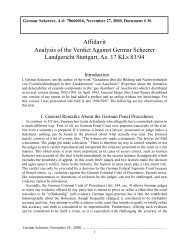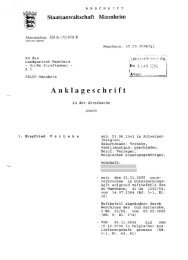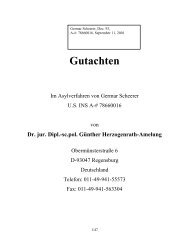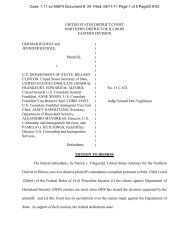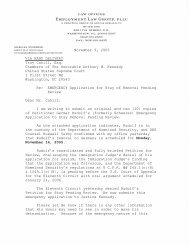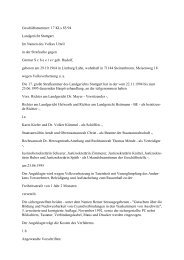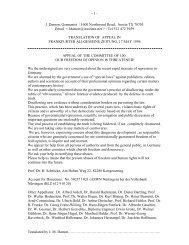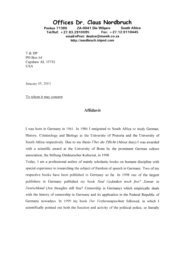Left-Extremist Endeavours
Left-Extremist Endeavours
Left-Extremist Endeavours
Create successful ePaper yourself
Turn your PDF publications into a flip-book with our unique Google optimized e-Paper software.
Dominant position of<br />
young right-wing extremists<br />
in social hot spots<br />
Publishing and distributing<br />
firms as "liberated zones"<br />
Relationship with neo-<br />
Nazis and right-extremist<br />
political parties<br />
creased. A decisive factor would seem to have been the ban imposed<br />
in July 1996 on the group "Skinheads Allgäu" 4) .<br />
In a number of hot spots in East German regions, young rightwing<br />
extremists hold a clearly dominant position - especially at<br />
the classical meeting places of young people, such as youth<br />
centres, the premises of railway stations, or market-places.<br />
Media reports often call these places "liberated zones" and thus<br />
put them into relation with a strategy paper issued by the "Nationaldemokratischer<br />
Hochschulbund" (NHB - "National-Democratic<br />
University/College Union"), which became first known in<br />
1991. The unidentified author of that paper called for the creation<br />
of a "counter-power from below" which should grow from<br />
autonomous free areas for the right-extremist scene and from the<br />
ousting of state power. By now, the term is increasingly employed<br />
also within the scene. Thus, for instance, publishing or<br />
distributing firms operated by right-wing extremists are also<br />
called "liberated zones". Nevertheless, there has been nothing so<br />
far to suggest systematic implementation of this strategy paper.<br />
One reason would seem to be the fact that the unstructured<br />
violence-inclined scenes lack the leaders who would be able to<br />
initiate the relevant processes or to co-ordinate them on a longterm<br />
basis.<br />
As before, the relations of right-extremist skinheads with neo-<br />
Nazis and with right-extremist parties are pursued on a varying<br />
scale, ranging from integration efforts to mutual rejection. In<br />
1999, there was an increase in the overall number of persons<br />
who were affiliated both to the skinhead scene and to neo-Nazi<br />
groups or right-extremist parties, especially the "Nationaldemokratische<br />
Partei Deutschlands" (NPD - "German National<br />
Democratic Party") and its youth organization, the "Junge Nationaldemokraten"<br />
(JN - "Young National-Democrats"). This is<br />
also due to the fact that individuals who have been members of<br />
the skinhead scene for many years - often these are regional<br />
leaders - engage in political activities with growing commitment<br />
and join the NPD or the JN or one of the neo-Nazi ’comradeships’.<br />
Members of their former clique will then follow them,<br />
but nevertheless will stay attached to the subcultural setting. In<br />
addition, the activities of NPD or JN activists have an effect at the<br />
local level: they provide rooms for meetings of skinhead groups,<br />
stage song recitals or concerts after electoral campaign events,<br />
and organize the travel of participants to demonstrations, and<br />
these activities are perceived by skinheads as an experience<br />
conducive to building a sense of community.<br />
In relation to the overall potential, however, the proportion of<br />
skinheads who enter into close and sustained relations with<br />
����





